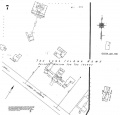Long Island Home
| Long Island Home | |
|---|---|
 | |
| Opened | 1882 |
| Current Status | Active |
| Building Style | Single Building (Demolished) |
| Location | Amityville, NY |
| Alternate Names |
|
History
In 1882, the Long Island Home Hotel opened with the first patient being admitted on Jan. 26. The main building seems to have had “an impressive structure with lavishly appointed parlors, bedrooms, dining rooms and sun porches,” according to a Southside Signal article in August. The following year, on July 21, during John Louden watch, the South Side Signal reported Edwin Woodbury, a New York City brush manufacturer and patient was found in Cedar Brook near Carman’s Road. In Amityville, a large number of patients were arriving at the train station to be admitted in the Long Island Home Hotel. The new patient arrivals would be met twice a day by a coachman driving a carriage drawn by two horses. The patients were treated like guests arriving at one of the many local waterfront resorts similar to the Surf Hotel being built during the Gilded Age (1870-1900)
The Brooklyn Daily Eagle, Aug. 15, 1884, ran an advertisement for the Long Island Home Hotel stating “it was a private hotel…for the care of persons afflicted with mental and nervous derangements. Near the Great South Bay and Ocean; 32 miles from New York.” The advertisement was signed by John Louden, and placed above that of the Argyle Hotel, a resort in Babylon. Two years later on June 5, the South Side Signal (Babylon) reported that Cornelius Richardson, a Brooklyn man, was transferred to the Amityville Insane Asylum. Perhaps the patients were beginning to understand that it was not a hotel.
By Sept. 30, 1886, 17 patients died at the Long Island Home Hotel, and 99 remained. The commission’s report mentioned, “…that the managers, individually and as a board, have been somewhat remiss in the discharge of their duties.” Further details were not given. The new superintendent of the Long Island Home Hotel was Joseph Carpenter, and the institution consists of a central building with a male, and a separate female two-story wing. The facility was two stories with a central hall, and dormitories on each side. Each floor had a day room and closets, as well as in the central building were parlors and private rooms.
Between October 1887 and September 1888, the institution had 20 deaths, 147 persons admitted with 80 being male and 67 female. The month of January had the most patients, and for the year 113 were discharged. The commissioner’s report mentioned that since the last report the name of the institution had changed slightly from the Long Island Homes Hotel to the Long Island Homes Company. A detailed description of new construction was given, and it was stated that “the servant’s quarters have been removed out of the main building, which had been a great source of annoyance.”
Around 1900, another Long Island Home cottage was built named Stanton Cottage (later the Sage House) for the treatment of just one patient.The following year, Maurice Barrymore (born Herbert Arthur Chamberlayne Blythe in 1849), the actor, would arrive at the Long Island Home for the Insane. In 1912, the Long Island Home purchased more property near the main building, which included a large home, two barns and several outbuildings.
The Long Island Home became the South Oaks Hospital in the 1950s. During these years, recognizing a community need, the board of directors convert Searle Cottage into a nursing home. Searle Cottage is renamed Broadlawn Manor Nursing Home.



